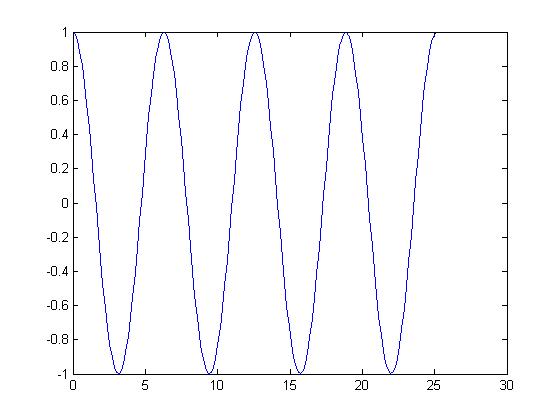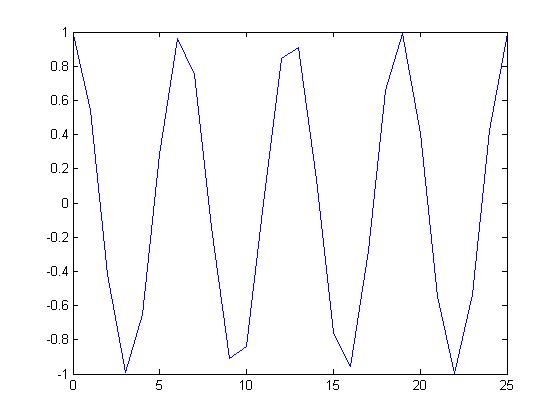(New page: We know that x(t)=cos(t) is a periodic CT signal because it follows the rule, x(t+T)=x(t). It is periodic with a period T=<math>2*pi</math> Now by sampling the CT signal at the right freq...) |
|||
| Line 1: | Line 1: | ||
| − | We know that x(t)=cos(t) is a periodic CT signal because it follows the rule, x(t+T)=x(t). It is periodic with a period T=<math> | + | We know that x(t)=cos(t) is a periodic CT signal because it follows the rule, x(t+T)=x(t). It is periodic with a period T=<math>\barwedge</math> |
Now by sampling the CT signal at the right frequencies will yield a periodic DT signal. It is noticed that the signal is a DT periodic signal when it is sampled at rate <math>2*pi</math>,<math>pi</math>. | Now by sampling the CT signal at the right frequencies will yield a periodic DT signal. It is noticed that the signal is a DT periodic signal when it is sampled at rate <math>2*pi</math>,<math>pi</math>. | ||
Revision as of 07:50, 11 September 2008
We know that x(t)=cos(t) is a periodic CT signal because it follows the rule, x(t+T)=x(t). It is periodic with a period T=$ \barwedge $
Now by sampling the CT signal at the right frequencies will yield a periodic DT signal. It is noticed that the signal is a DT periodic signal when it is sampled at rate $ 2*pi $,$ pi $.
When you have a signal at a sampling rate of $ 2*pi $ we get a periodic DT signal.

Now by sampling the CT signal at a random sampling rate of 1 we get a non periodic DT signal.


